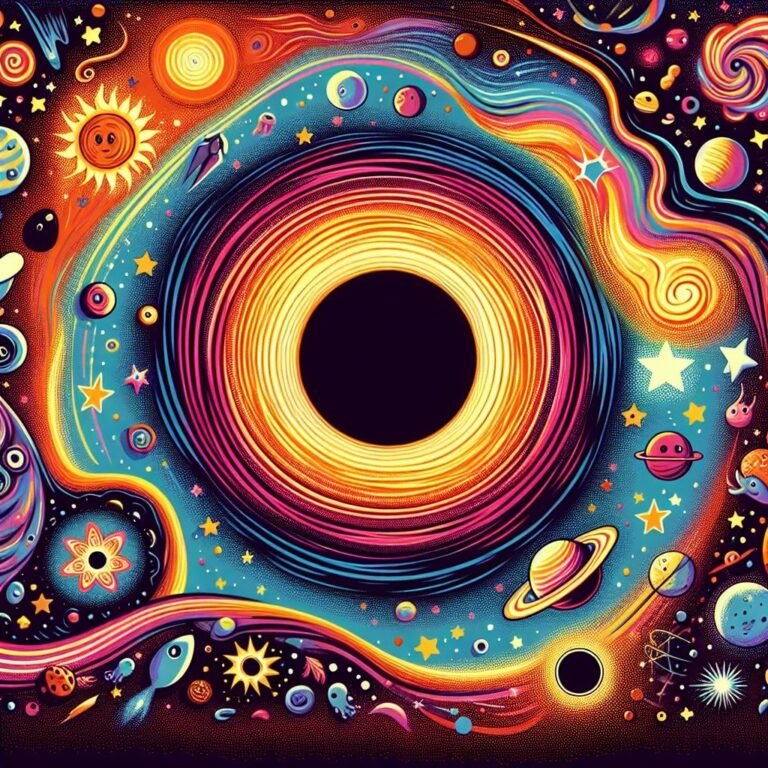Welcome to an exciting exploration of Black Holes Facts For Kids! In this blog post, we will uncover the fascinating mysteries of black holes and delve into the captivating world of these enigmatic cosmic entities. From the surprising fact that black holes are not actually black to the mind-boggling concept of time dilation near these astronomical wonders, there is so much to discover and learn about black holes. Join us on this journey as we unravel the incredible properties and behaviors of black holes, inspiring curiosity and awe in young minds. Get ready to embark on an adventure through the cosmos and expand your understanding of the universe with these engaging and educational fun facts about black holes. Let’s dive in and prepare to be amazed by the wonders of the universe!
Black Holes Facts For Kids
1. Black Holes Are Not Black

For younger kids: Black Holes look black, but they actually glow and emit light.
For older kids: Although they are known as ‘black holes,’ these cosmic phenomena actually emit light and other forms of radiation, giving them the appearance of glowing in outer space.
Detailed explanation:Black holes have long been a source of fascination and confusion for both scientists and the general public. Contrary to popular belief, black holes are not actually black. In fact, they are incredibly bright objects that emit a vast amount of energy in the form of radiation.
The concept that black holes are not black can be somewhat difficult to grasp, but it is rooted in the science of how black holes actually work. Black holes are formed when a massive star collapses in on itself, creating a gravitational pull so strong that not even light can escape. This is why they appear black to observers – because no light can escape their grasp.
However, as matter is pulled towards a black hole, it forms what is known as an accretion disk around the black hole. This disk becomes incredibly hot and emits a bright glow of energy, making the black hole itself appear incredibly bright. In fact, this radiation can be so intense that it outshines the light emitted by all the stars in the surrounding galaxy combined.
This phenomenon of black holes not actually being black is important for our understanding of the universe and the role that black holes play in it. By studying the radiation emitted by black holes, scientists can learn more about their properties and behaviors, shedding light on some of the most mysterious objects in the cosmos.
In conclusion, despite their name, black holes are not black at all – in fact, they are some of the brightest objects in the universe, emitting vast amounts of energy that can be detected and studied by scientists. This fascinating aspect of black holes facts for kids helps to illuminate the complex and awe-inspiring nature of these cosmic phenomena.
Black Holes Facts For Kids
2. Black Holes Can Bend and Warp Time

For younger kids: Black Holes have such strong gravity that they can make time slow down!
For older kids: The immense gravitational pull of a black hole can warp and bend the fabric of spacetime, resulting in the phenomenon of time dilation, where time moves differently at various distances from the black hole.
Detailed explanation:Black holes are fascinating objects in the universe that can bend and warp both space and time. This mind-boggling concept was first theorized by Albert Einstein in his theory of general relativity. According to this theory, massive objects like black holes can cause spacetime to curve around them, creating a gravitational pull so strong that not even light can escape.
When an object gets too close to a black hole, it can experience extreme gravitational forces that cause time to slow down. This phenomenon is known as time dilation, where time passes at a slower rate closer to the black hole compared to farther away. This means that if you were to approach a black hole, time would appear to be passing more slowly for you compared to someone observing you from a safe distance.
The extreme gravitational forces of black holes also have the ability to bend light, a phenomenon known as gravitational lensing. This occurs when the gravitational pull of a black hole causes light particles to follow a curved path, creating distorted images of objects behind the black hole.
Overall, the concept of black holes bending and warping time is a mind-bending idea that highlights the incredible forces at work in the universe. By understanding these Black Holes Facts For Kids, we can gain a deeper appreciation for the mysteries of space and the fundamental principles of physics.
Black Holes Facts For Kids
3. Black Holes Swallow Everything, Even Light
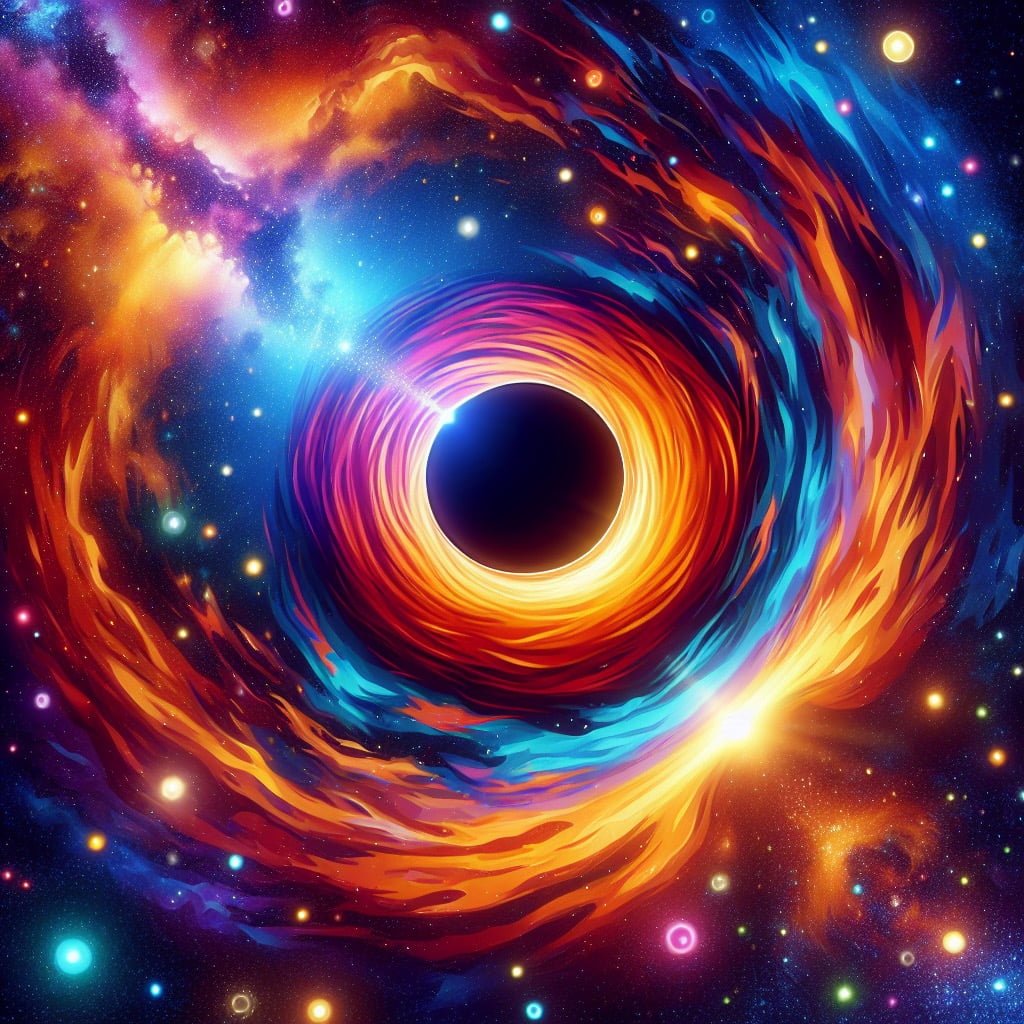
For younger kids: Black Holes are so hungry they even swallow light—it’s like they’re the vacuum cleaners of space!
For older kids: The gravitational pull of a black hole is so strong that not even light, the fastest thing in the universe, can escape its grasp, making them true cosmic vacuum cleaners.
Detailed explanation:Black holes are among the most fascinating and mysterious phenomena in the universe. These cosmic monsters have such strong gravitational pull that nothing, not even light, can escape once it crosses the event horizon, the point of no return. This means that black holes effectively swallow everything in their path, making them invisible and undetectable to current technology.
For kids interested in space, black holes are like the ultimate vacuum cleaners of the cosmos. They suck in matter and energy with such force that not even the fastest spaceship could escape their gravitational grasp. Imagine a giant sinkhole in space, where everything gets pulled in and disappears without a trace. It’s a concept that can be both terrifying and thrilling to ponder.
One of the most fascinating aspects of black holes is their ability to warp space and time. According to Einstein’s theory of general relativity, black holes create a gravitational field so intense that it distorts the fabric of the universe around them. This means that time slows down near a black hole, creating mind-bending effects that challenge our understanding of reality.
Despite their fearsome reputation, black holes are not necessarily destructive forces. They play a crucial role in the life cycle of stars and galaxies, recycling material and shaping the cosmic landscape. By studying black holes, scientists can learn more about the nature of gravity, the origins of the universe, and the possibilities of other dimensions.
In conclusion, black holes are intriguing objects that continue to capture the imagination of both kids and adults alike. Their ability to swallow everything, even light, makes them one of the most enigmatic and captivating phenomena in the universe. So, next time you look up at the night sky, remember that black holes are out there, silently lurking and shaping the cosmos in ways we are only beginning to understand.
Black Holes Facts For Kids
4. Black Holes Can Be Different Sizes
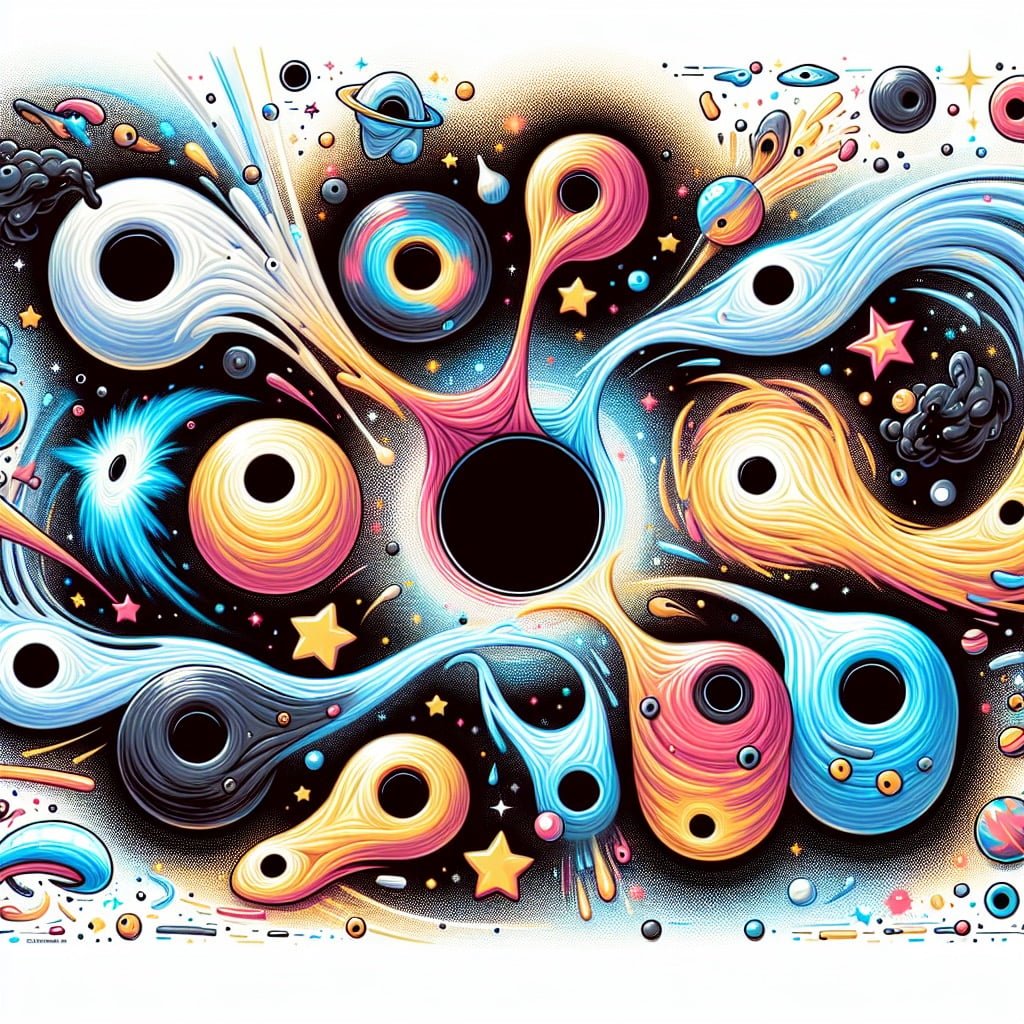
For younger kids: Black Holes come in different sizes—some are small, and some are really, really big!
For older kids: Black holes can vary in size, from tiny ‘stellar’ black holes formed by collapsed stars to supermassive black holes found at the centers of galaxies, which can be billions of times the mass of our sun.
Detailed explanation:Black Holes Facts For Kids are such a fascinating topic to explore. One of the most intriguing aspects about black holes is that they can come in different sizes.
Black holes are formed when massive stars collapse under their own gravity, creating a region in space where the gravitational pull is so strong that not even light can escape. The size of a black hole is determined by its mass – the more mass it has, the larger its event horizon will be.
There are primarily two types of black holes based on their sizes: stellar black holes and supermassive black holes. Stellar black holes are formed from the remnants of massive stars that have exploded in a supernova. These black holes typically have a mass around 3 to 10 times that of our sun, making them relatively smaller in size compared to their supermassive counterparts.
On the other hand, supermassive black holes are millions to billions of times more massive than our sun. These black holes are thought to reside at the centers of galaxies, including our own Milky Way. The supermassive black hole at the center of our galaxy, Sagittarius A*, has a mass equivalent to around 4 million suns.
In conclusion, Black Holes Facts For Kids are important to understand because they allow us to delve into the vast and mysterious phenomena of the universe. The varying sizes of black holes provide us with insight into the diversity and complexity of these enigmatic objects that continue to captivate scientists and enthusiasts alike.
Black Holes Facts For Kids
5. Black Holes Create Powerful Jets of Energy

For younger kids: Black Holes shoot out super-fast beams of energy called ‘jets’!
For older kids: In some cases, black holes can create incredibly powerful jets of energy, shooting out from their poles at nearly the speed of light, and spanning thousands of light-years across the universe.
Detailed explanation:Black holes are fascinating objects in our universe that have captured the imaginations of both scientists and the general public alike. One of the most intriguing aspects of black holes is their ability to create powerful jets of energy. These jets, which can be seen in the form of intense radiation and particles streaming away from the black hole at near the speed of light, are some of the most energetic phenomena in the universe.
These jets are created by processes within the black hole itself. As matter falls into the black hole, it forms an accretion disk around the event horizon. The intense gravity of the black hole causes the material in the disk to heat up and emit high-energy radiation. Some of this material is also ejected along the black hole’s axis of rotation, forming the jets.
The exact mechanisms behind the creation of these powerful jets are still not fully understood. However, scientists believe that magnetic fields play a crucial role in shaping and accelerating the material that forms the jets. These magnetic fields can become twisted and stretched as they interact with the rapidly spinning black hole, creating a powerful magnetic “spring” that launches the jets away from the black hole.
Studying these jets is important not only for understanding the extreme physics of black holes, but also for gaining insights into the role they play in the evolution of galaxies. Jets from black holes can have a profound impact on their surrounding environments, influencing the formation of stars and regulating the growth of galaxies. Overall, the creation of powerful jets by black holes is a testament to the incredible energies and forces at work in the universe.
In conclusion, black holes are truly extraordinary objects that have the ability to create powerful jets of energy that can influence the evolution of galaxies. Exploring these phenomena provides valuable insights into the extreme physics of black holes and the broader universe.
Black Holes Facts For Kids
6. Black Holes Can Tell Us About the Universe’s History

For younger kids: Scientists study Black Holes to learn about the universe’s past!
For older kids: By studying black holes and the objects they interact with, scientists can discover clues about the history and evolution of galaxies, stars, and the universe as a whole.
Detailed explanation:Black holes are fascinating phenomena in the universe that have captured the imaginations of scientists and the general public alike. These massive objects have such strong gravitational pulls that not even light can escape from them, making them invisible to the naked eye. Despite their mysterious nature, black holes can actually provide us with valuable information about the history of the universe.
One way in which black holes can tell us about the universe’s history is through the study of their formation. Scientists believe that black holes are created when massive stars collapse in on themselves at the end of their lives. By studying the formation of black holes, researchers can learn more about the life cycle of stars and how they evolve over time. This, in turn, can help us piece together the timeline of events that have shaped the universe as we know it today.
Additionally, black holes can also reveal information about the processes that occur within them. As matter and energy are pulled into a black hole’s gravitational field, they create intense radiation and high-energy particles that can be detected by telescopes and other observing instruments. By studying this radiation, scientists can gain insights into the physical properties of black holes and the mechanisms by which they interact with their surroundings.
In conclusion, black holes are not just enigmatic cosmic objects – they are also valuable tools for understanding the history and evolution of the universe. By studying their formation and the processes that occur within them, scientists can uncover important clues about the origins and development of the cosmos. So, next time you look up at the night sky, remember that those invisible black holes hold the key to unlocking the mysteries of the universe’s past.
Black Holes Facts For Kids
7. Black Holes Experience “Spaghettification”
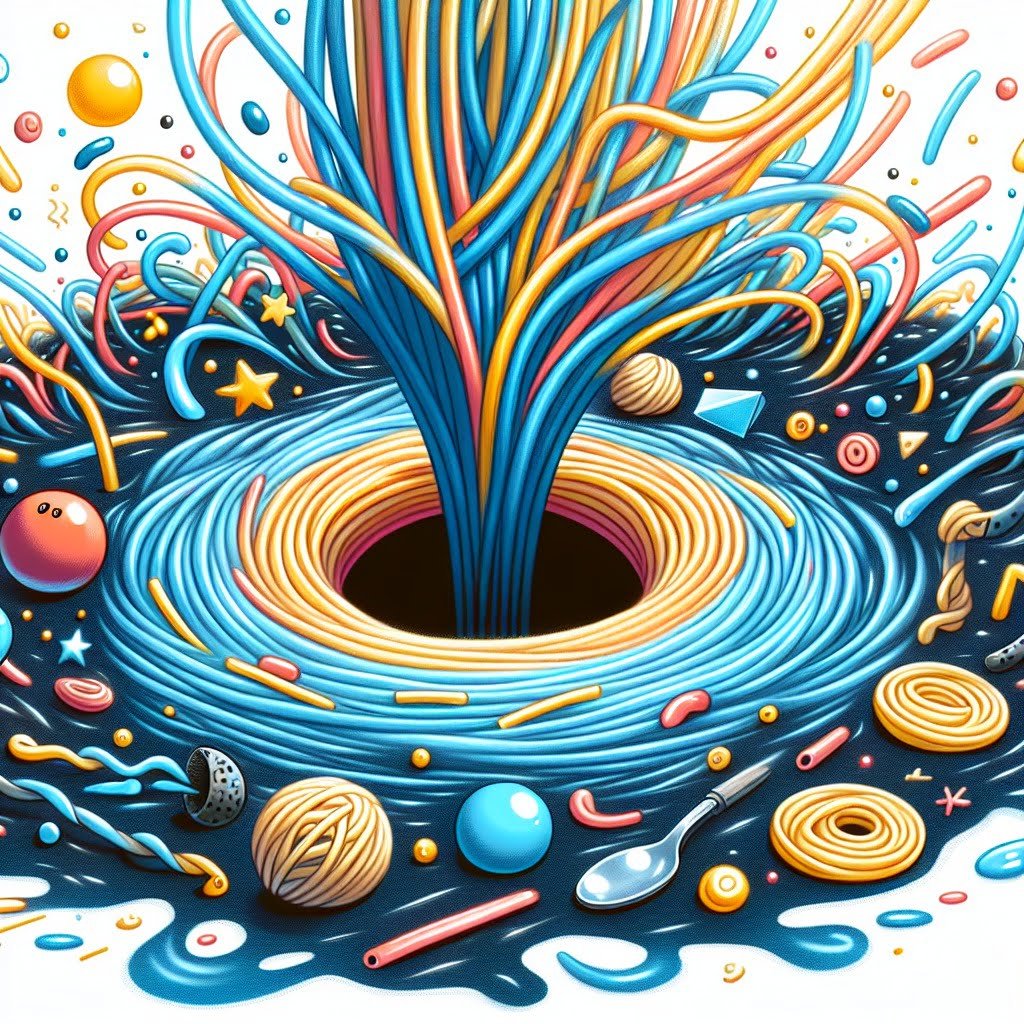
For younger kids: Anything that gets close to a Black Hole gets stretched like spaghetti!
For older kids: The intense gravitational pull of a black hole would cause ‘spaghettification’, a phenomenon where any object or matter falling into a black hole gets stretched into long, thin shapes due to the difference in gravitational force.
Detailed explanation:Black Holes, a fascinating phenomenon in our universe, are known for their extreme gravitational pull that can trap even light. One interesting and rather bizarre effect that occurs near a black hole is “spaghettification.” This term may sound whimsical, but it accurately describes the intense tidal forces that occur close to a black hole.
When an object, such as a star or even a spaceship, gets too close to a black hole, the difference in gravitational pull between the side of the object facing the black hole and the side facing away from it creates a powerful tidal force. This tidal force is so strong that it stretches the object into a long, thin shape resembling strands of spaghetti.
For example, if a spaceship were to venture too close to a black hole, the gravitational pull on the side facing the black hole would be much stronger than the pull on the other side. As a result, the spaceship would be stretched and pulled apart by the tidal forces, eventually being torn into pieces before disappearing beyond the event horizon of the black hole.
This phenomenon of spaghettification near a black hole is a direct result of the extreme gravitational field surrounding the black hole. Understanding such Black Holes Facts For Kids can help us appreciate the remarkable and sometimes mind-boggling aspects of the universe we live in.
Black Holes Facts For Kids
8. Black Holes Might Have Exotic Matter Inside
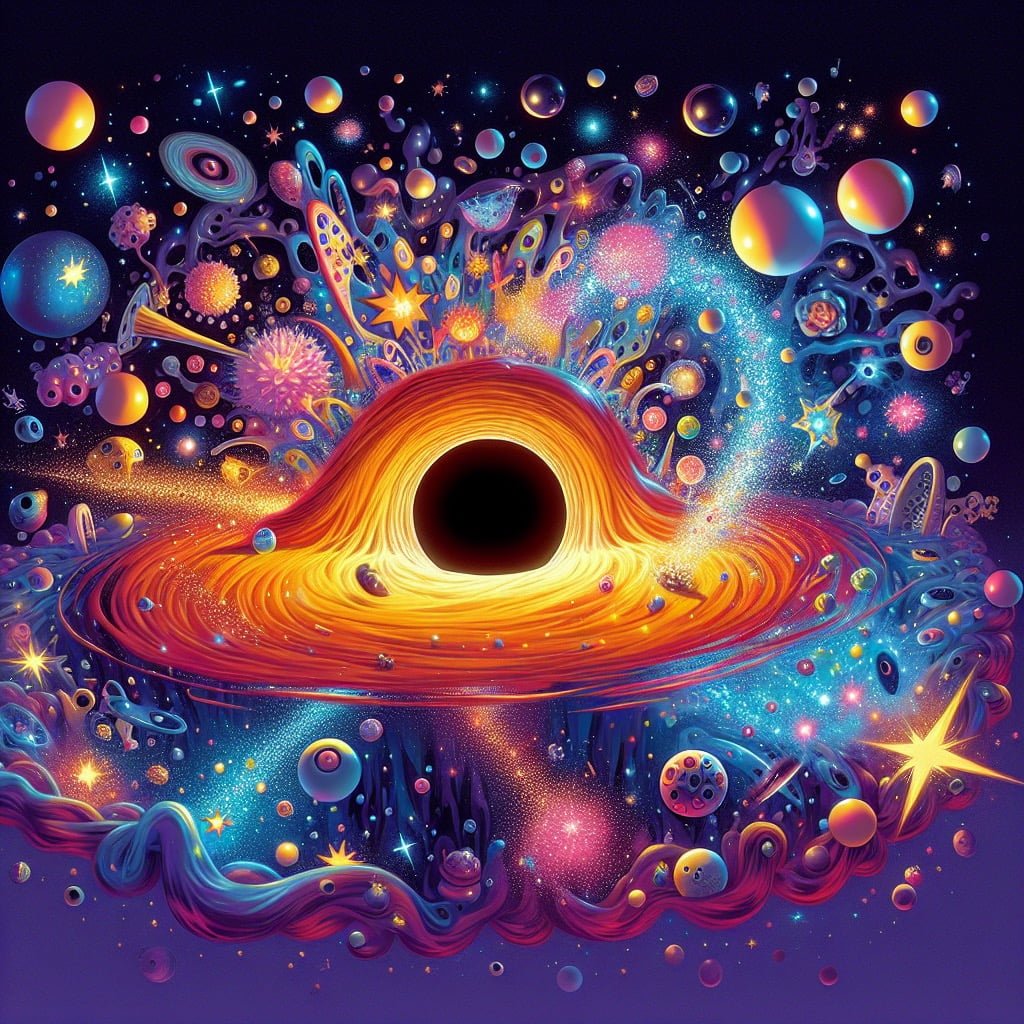
For younger kids: Black Holes could have really strange stuff inside!
For older kids: Some theories suggest that black holes may contain ‘exotic’ forms of matter, such as strange matter, quark matter, or even wormholes, leading to exciting possibilities for the nature of these enigmatic cosmic entities.
Detailed explanation:Black holes are incredibly fascinating objects in space that have puzzled scientists and captured the imaginations of people around the world, including kids. One of the most intriguing aspects of black holes is the possibility that they may contain exotic matter.
Exotic matter is a hypothetical form of matter that does not behave like the normal matter that we are familiar with on Earth. While we cannot directly observe or measure exotic matter, scientists have theorized that it may exist inside black holes based on the behavior of these enigmatic objects.
Black holes are known for their immense gravitational pull, which is so strong that not even light can escape once it passes the event horizon – the point of no return. This extreme gravity is believed to crush the matter inside a black hole to an infinitely small point known as a singularity. However, the laws of physics as we currently understand them break down at the singularity, leading scientists to theorize that exotic matter may exist beyond this point.
Exotic matter is thought to have negative energy and negative mass, which would have counterintuitive effects on spacetime. It could potentially create wormholes, warp spacetime, or even allow for time travel. While these ideas are still speculative, they capture the imagination and provoke further research into the mysteries of black holes.
For kids who are interested in astronomy and space exploration, learning about black holes and their potential connection to exotic matter can open up a world of endless possibilities and inspire curiosity about the unknown realms of the universe. With ongoing advancements in technology and scientific exploration, the true nature of black holes and their contents may one day be revealed, unlocking even more amazing Black Holes Facts For Kids to explore and wonder about.
Black Holes Facts For Kids
9. Black Holes Can Make “Music”

For younger kids: Black Holes sing in space like a gigantic space orchestra!
For older kids: The intense vibrations and frequencies generated by the accretion disks and jets of certain black holes have been likened to musical tones, giving rise to the unusual concept of ‘black hole music’.
Detailed explanation:Black holes, despite being known for their mysterious and powerful gravitational pull, have also been found to produce unique “music”. This phenomenon occurs when gas and dust are pulled into a black hole, creating violent and chaotic movements that emit sound waves.
One key aspect of this process is that the sound waves generated by black holes are not actually audible to the human ear, as they exist in the form of low-frequency vibrations. However, scientists have been able to translate these vibrations into audible sound waves using advanced technology.
These “songs” produced by black holes can provide valuable insights into the nature of these cosmic entities. By studying the frequency, pitch, and duration of the sound waves emitted by a black hole, researchers can gain a better understanding of its size, mass, and behavior.
In fact, recent studies have shown that the pitch of the sound waves produced by a black hole is directly related to its size and rate of rotation. This information can be crucial in studying the evolution and dynamics of black holes in the universe.
Overall, the discovery that black holes can produce “music” highlights the complexity and diversity of phenomena in the cosmos. By studying these Black Holes Facts For Kids, scientists can continue to unravel the mysteries of these enigmatic objects and gain a deeper appreciation for the beauty and complexity of the universe.
Black Holes Facts For Kids
10. Black Holes Can Evaporate Over Time
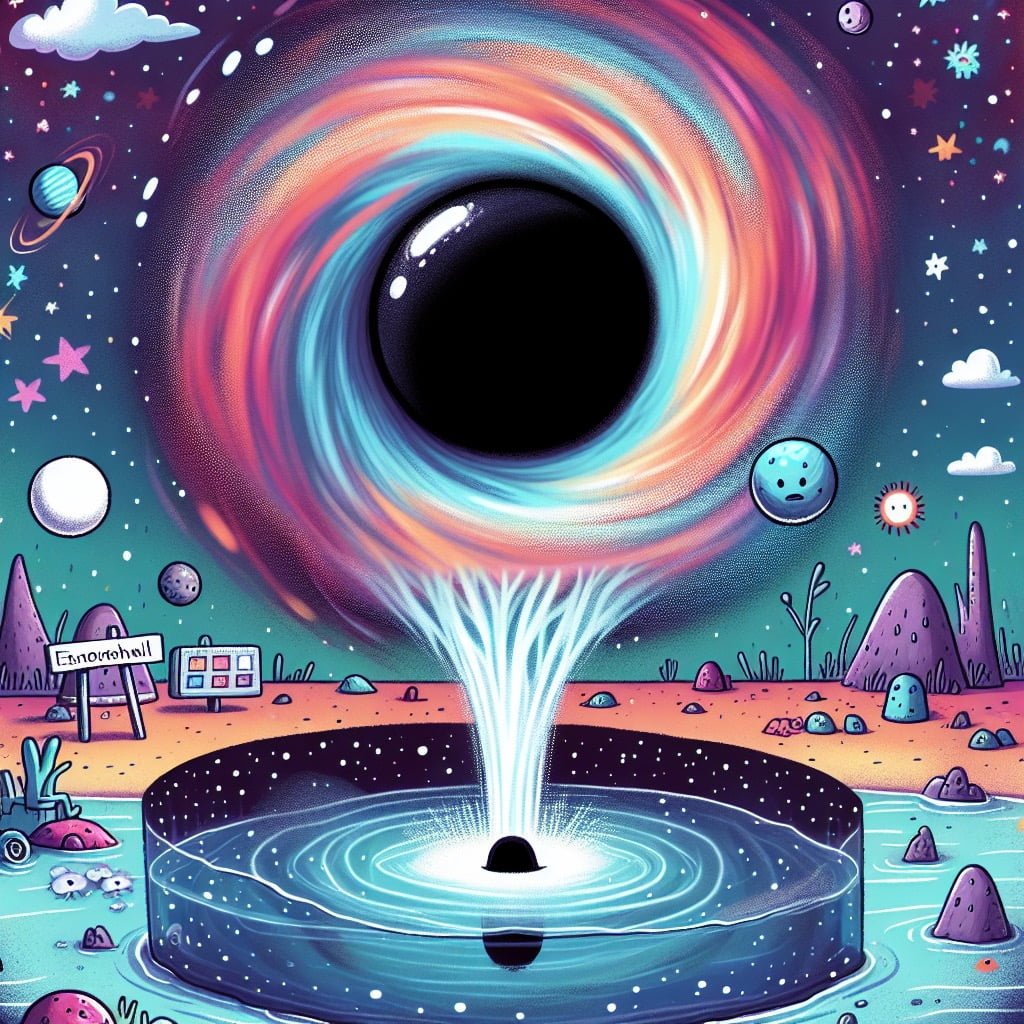
For younger kids: Black Holes slowly disappear over a very, very long time!
For older kids: According to theoretical physics, black holes can slowly shrink and disappear over an incredibly long period through a process known as ‘Hawking radiation’, proposed by physicist Stephen Hawking.
Detailed explanation:Black holes are mysterious objects in space that have fascinated scientists and the general public for decades. One of the most fascinating facts about black holes, especially for kids, is that they can actually evaporate over time. This phenomenon is known as Hawking radiation, named after the famous physicist Stephen Hawking who first proposed the theory.
According to the theory of Hawking radiation, pairs of virtual particles are constantly being created near the event horizon of a black hole. One particle falls into the black hole while the other escapes into space. Over time, this process can cause the black hole to lose mass and energy, eventually leading to its evaporation.
This concept may seem counterintuitive, as black holes are known for their powerful gravitational pull that not even light can escape from. However, the process of Hawking radiation allows for the gradual release of energy, causing the black hole to shrink in size until it eventually disappears completely.
For kids interested in space and astronomy, the idea that black holes can evaporate over time provides a fascinating glimpse into the complex and dynamic nature of the universe. It also highlights the importance of ongoing research and exploration in understanding the behavior of these enigmatic cosmic entities.
In conclusion, the fact that black holes can evaporate over time reveals the dynamic and ever-changing nature of the universe. This process, known as Hawking radiation, offers a unique perspective on the behavior of black holes and showcases the ongoing advancements in our understanding of these mysterious astronomical phenomena. Black Holes Facts For Kids are not only intriguing, but also serve as a reminder of the endless possibilities for discovery and exploration in the field of astronomy.
Did You Know?
Black Holes can violently tear apart stars and planets that get too close, a process known as ‘spaghettification’!
Summary of Black Holes Facts For Kids
Exploring the fascinating world of Black Holes can be an incredibly enriching experience for children. By delving into the properties and behaviors of these mysterious entities, young minds can not only gain a deeper understanding of the universe but also cultivate a sense of curiosity and wonder about the cosmos. From learning about the different types of Black Holes to understanding their impact on surrounding galaxies and stars, there is no shortage of mind-bending concepts to uncover.
By reading more about Black Holes, children can develop critical thinking skills, problem-solving abilities, and an appreciation for the complexity and beauty of the universe. Delving into topics such as relativity, quantum mechanics, and Hawking radiation can spark a thirst for knowledge and a desire to explore the unknown. Overall, exploring Black Hole facts for kids can provide a rich and rewarding learning experience that will inspire a lifelong passion for science and discovery. So, grab a telescope and prepare to be amazed by the wonders of the universe!
Sources and additional information for Black Holes Facts For Kids
WikipediaBritannicaNASAEuropean Space Agency (ESA)Space.comAstrophysical JournalSky & TelescopeUniverse TodaySpaceXThe Planetary SocietyAstronomy MagazineHubbleSiteNational Geographic KidsNASANational Air and Space MuseumESA KidsSpace.comThe Planetary SocietyNational Radio Astronomy Observatory (NRAO)Hayden PlanetariumSky & Telescope
